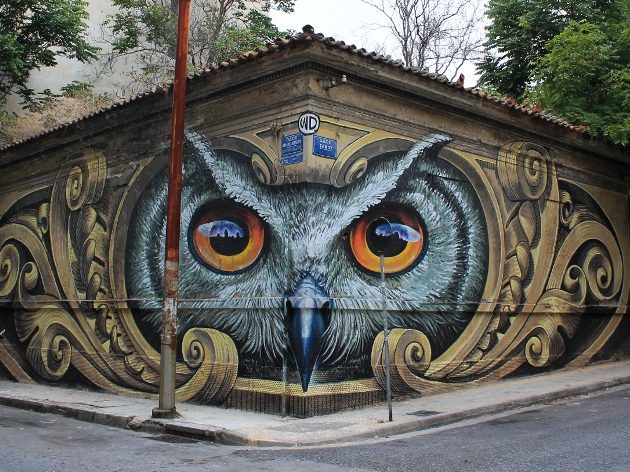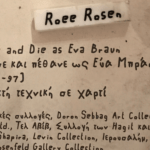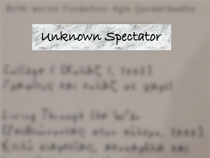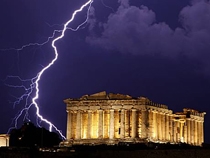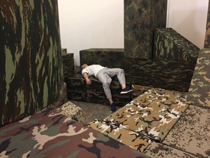Comment on the ‘Narratives’ Section of ‘Learning From Documenta 14’
George Marcus

Biennales, international ‘blockbusters,’ and certainly Documenta, have become sources of inspiration and ideas for anthropology. This is not only for more richly interpreting what one observes in ethnographic fieldwork (artists can sometimes explore materially in the same terrains and sites what fieldworkers can only imagine—see Fischer (2018) for research in Asia and on environmental challenges that depend on insights and scenarios produced in contemporary art, often showcased and found in extravaganzas like Documenta), but for encouraging the creation and design of interventions in the process of research, with theater arts and performance traditions as well as participatory, site-specific art as sources (Bishop 2006, 2012; Kester, 2013, Cantarella, Hegel, and Marcus 2019). These current so-called ‘multi-modal’ tendencies in ethnographic research (see, for example, Hartblay 2020, and Estalella and Criado, 2018) are produced by opportunistic collaborations of diverse sorts between anthropologists and the range of artists whose works compose the prestige hierarchy of international exhibitions (see Boyer and Marcus 2020 for a sampling of such ‘found’ collaborations in anthropology today which lead to interventions within research processes that resemble very much what is exhibited in highly selective international art fairs, such as Documenta, but without the production resources, the high pressure of competition, and the stakes in reputation).
Aspirant ‘multi-modal’ ethnographers are relieved of worrying about the elitist politics and ambitions of art world curatorial culture that produce these extravaganzas (though the elitist politics and ambitions of art world curatorial culture that produce these events are studied as well by anthropologists—see, for example, Sansi 2020—and by those anthropologists who are also artists, as with the Athens collective that produced two stimulating, before and after, conferences on Documenta 14). Instead, the contemporary ‘multi-modal’ designers of ethnographic research look to exhibits for both substantive insights and ideas for interventions that they can produce in their more modest realms of mounting research. The latter might be considered ‘third spaces’ or ‘para-sites’ in relation to ethnographic research projects (see Marcus 2000, 2020). Indeed, the ‘para-site’ experiments of contemporary multi-modal ethnography create scenarios that travel in relation to the pathways of research from sites of fieldwork, sometimes to found venues of reception on a multi-sited path of research, finally to ‘breaking the fourth wall’ of the seminar/lecture settings of authoritative academic spaces of discourse spectacle, not unlike the travel of Documenta 14 from Kassel to Athens back to Kassel, with Athens being roughly comparable to the field, the ‘in the world’ of field research, and Kassel being comparable to the site of authority in the university lecture/seminar space of disputation in which an ethnographic project might stage a ‘para-site.’
As these essays suggest, the mobile production of Documenta 14 in another setting other than Kassel with defensible and normatively correct provocations in mind generates such test cases and insights for ethnographers. Each of the reflective essays of this issue have something to offer—both in ingenuity and as cautionary tales—about the current ambitions of anthropologists to create participatory art, internal publics, and dialogues alongside, adjacent to, ongoing ethnographic fieldwork, where ‘effects,’ and participations are created to further emerging concepts of interpretation. Producing participatory art is a fulfillment of the dialogic, polyphonic passions and hopes of the late twentieth century critical examination of ethnographic narrative and by implication of the distinctive historic mode of anthropological investigation.
For example, what I have in mind here is the apt reference by Thomas Fillitz in his commentary on the famous commissioning partnership that Johannes Fabian established with a Lubumbashi painter in the 1990s. In this pioneering work in a career of innovative experiments anticipating current multi-modal enthusiasms, Fabian works through the Documenta 14-style potential of fieldwork projects which create the mise-en-scène of artmaking for them. The actual connections of the modest art-making ascendant in multi-modal ethnographic projects, like Fabian’s experiment with painting, and the ethnographic gestures and consequences of Documenta 14’s movement between Kassel and Athens, have yet to be fully made.
However, as a delayed second act to Fabian’s 1990s ‘third space’ experiment in fieldwork, Fabian’s Lubumbashi partner was present in Kassel at Documenta 14 and Fabian himself visited (in terms of Fabian’s later work this would be an act, a ‘second act’ by him of ‘commentary,’ not ‘coeval’ with fieldwork, but artfully creating another temporality for it, see Fabian 2008). Ironically here, Documenta 14 at home in Kassel within its curatorial paradigm asserts its prestige selectivity by inviting and incorporating Fabian’s multi-modal act of delayed ‘third space,’ parasitical art-making in 1990s fieldwork through inviting him to comment on the work of his former partner in collaboration.
Each of the ‘Narratives’ essays (as well as several others in this FIELD collection) has interesting and often novel points to make that are relevant to the multi-modal tendencies and passions in contemporary ethnographic fieldwork. But to conclude this commentary, I will cite only Apostolos Lampropoulos’s essay that both probes Derrida’s notion of ‘hospitality’ as a defining concept to reflect upon for those who move among cultures, locations, and local situations—like ethnographers, like critical theory star scholars (!), like curators of ambition, such as those who formulated and conducted Documenta 14. Lampropoulos probes the hospitality operating in D14 by working through cases like “Shamiyaana—Food for Thought.” As he says, “re-inscribing a traditional ritual into the urban fabric of a capital, this social sculpture re-established reception as a virtue and remained, in my view, a little too attached to a more or less idealized conception of hospitality.” Indeed! Art, in all its ingenuity, and its own art world institutions of evaluation, tends to encourage a ‘more or less idealized conception,’ in this case of hospitality. While depending on this conception as realized by the artist, the ethnographer would seek to find something messier and more contestable, as indeed, the artist of Shamiyaana, Rasheed Araeen, in fact did. But finally, Lampropoulos gives very valuable advice (advice that is also at the heart of critique of D14 as well as a proviso for the politics and ethical implication of doing something similar in para-sites or third spaces of current ethnographic experimentation): “I tend to think that a critique of d14 based on inconsistencies in its project of hospitality or on the presumption that it has given itself an Impossible mission …are not productive ways of tackling the issue. This would be a critique based on the outrageous requirement that d14 should have rendered the impossible, whereas it is crucial to find out how d14 attempted to radicalize its conception of hospitality without avoiding the necessary failure.” Lampropoulos then goes on to read other works presented at d14 through a fascinating exercise of critical theory interrogation that tacks back to Derrida’s haunting ethics. For ethnographers who want to incorporate third space or ‘para-site’ dimensions within their multi-modal projects of research, these Derridean inspired critiques of and conversations with the curatorial strategies and outcomes of D14 will be highly productive.
George E. Marcus is a Professor of Anthropology at the University of California, Irvine. He has researched and written about nobility in Tonga, an upper-class group with family fortunes in Galveston, Texas, and a Portuguese nobleman. In his books Writing Culture and Anthropology as Cultural Critique, he argued that anthropologists typically frame their thoughts according to their own social, political, and literary history, and are inclined to study people with less power and status than themselves. Marcus’s current research focuses on institutions of power and their relationships with ordinary people.
References:
Bishop, Claire. 2012. Artificial Hells: Participatory Art the Politics of Spectatorship. London: Verso Books. 2006. Participation. Cambridge: MIT Press
Boyer, Dominic and George E. Marcus. 2020. Collaborative Anthropology Today: a Collection of Exceptions. Ithaca: Cornell University Press.
Cantarella, Luke, Christine Hegel, and George E. Marcus. 2019. Ethnography By Design: Scenographic Experiments in Fieldwork. London: Bloomsbury.
Estalella, Adolpho and Tomas Sanchez Criado. 2018. Experimental Collaborations: Ethnography Through Fieldwork Devices. London: Berghahn Books.
Fabian, Johannes. 2008. Ethnography as Commentary: Writing from the Virtual Archive. Duke: Duke University Press.
Fischer, Michael M.J. 2018. Anthropology in the Meantime: Experimental Ethnography, Theory, and Method for the Twentieth-First Century. Durham: Duke University Press.
Hartblay, Cassandra. 2020. I Was Never Alone or Oporniki : an Ethnographic Play on Disability in Russia. Toronto: University of Toronto Press.
Kester, Grant. 2013. Conversation Pieces: Community and Communication in Modern Art. Berkeley: University of California Press.
Marcus, George E. 2020. “The Parasite in Ethnographic Research Projects.” In Experimenting With Ethnography: a Companion to Analysis, edited by Andrea Ballestero and Brit Ross Winthereik. Durham: Duke University Press.
Marcus, George E. editor. 2000. Para-Sites: a Casebook Against Cynical Reason. Late Editions 7. Chicago:University of Chicago Press.
Sansi, Roger, editor. 2020 The Anthropologist As Curator. London: Bloomsbury.

